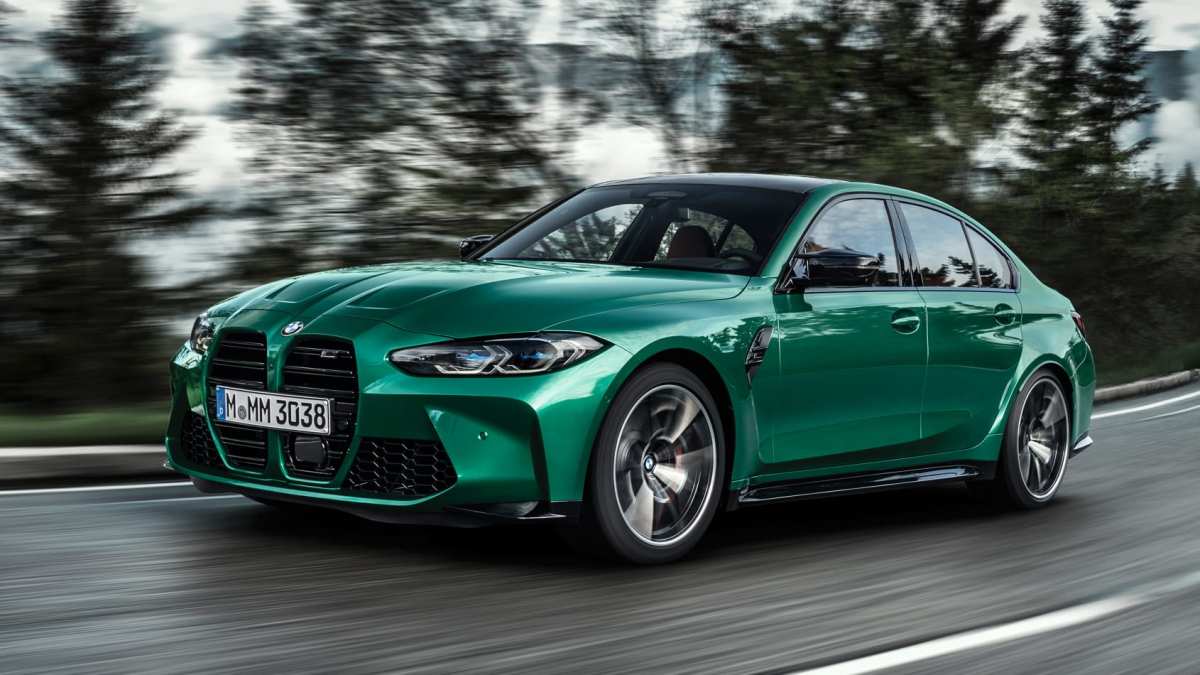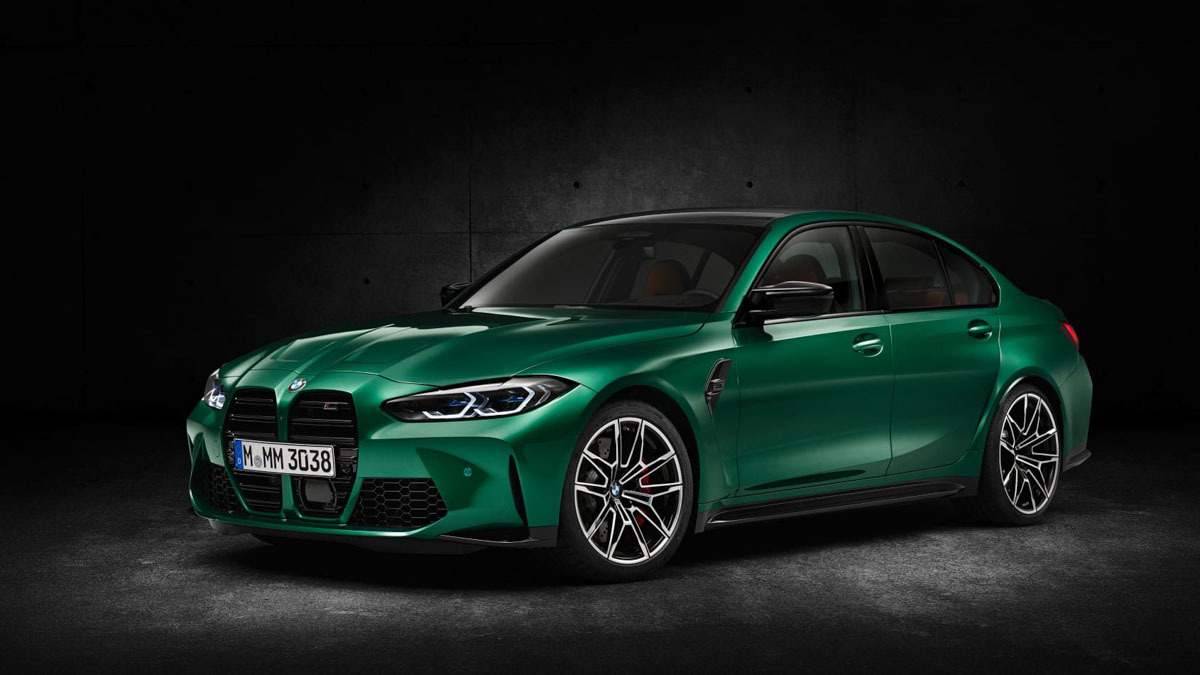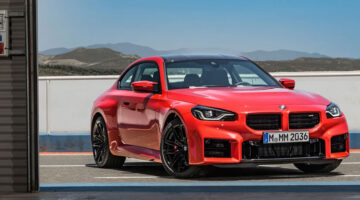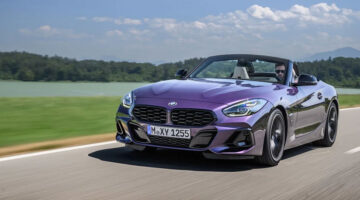This is the all-new BMW M3 Competition saloon which will join the M4 Competition coupe in BMW M’s new M3/4 family
To coincide with the arrival of the all-new M4 coupe, BMW’s M Division has also revealed the new M3 saloon, the second in what will become a whole family of high performance models that will also come to include an M4 cabriolet and M3 Touring for the first time.
While the fundamental M3 package doesn’t appear to have changed – it’s still a rear-wheel drive sports saloon with a turbocharged six-cylinder engine – the ingredients that make up the new M3 saloon are all-new, with a fresh powertrain, chassis, drivetrain and that bold new look.
The new M3 saloon will be available exclusively in Competition trim, which pairs a 503bhp version of BMW’s S58 straight-six turbocharged petrol engine with an eight-speed torque-converter automatic transmission and rear-wheel drive. Overseas models will also be available in a lesser 467bhp non-Competition form and with an optional six-speed manual transmission.
On-paper performance has only marginally improved in the new M3 saloon despite the 59bhp rise in peak power. The car will hit 100kph in 3.9sec, which is only 0.1 faster than before. Top speed is limited to 250kph in standard models, but this can be lifted to 290kph with the optional M Pro Package.
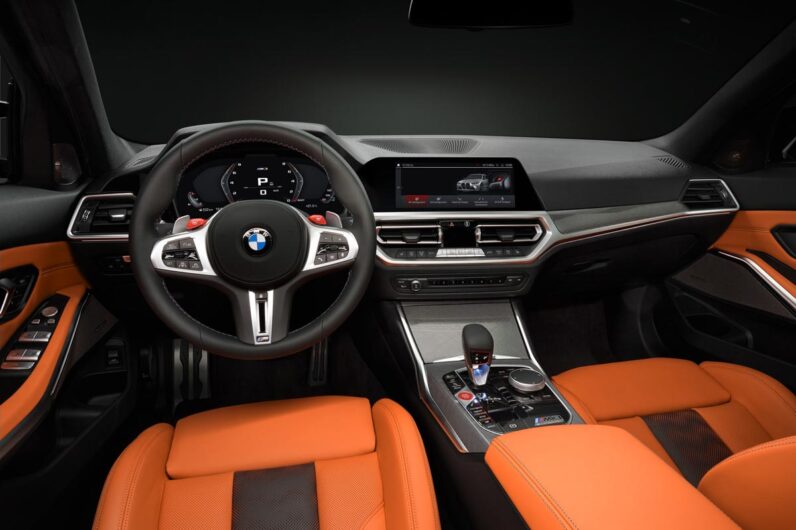
From mid-2021, BMW will expand the M3 and M4 ranges by offering an optional all-wheel drive system for the first time. This system is familiar from the M5 and M8 Competitions, being predominantly rear-biased and with the capability to completely decouple the front axle, returning the car to rear-wheel drive form. BMW has not announced specifics of the expected weight penalty the system will bring with it, but given that the standard rear-wheel drive model has a 140kg weight increase to 1725kg, it could make for a near-1800kg M3 saloon.
BMW’s M department has applied plenty of changes to the standard 3-series chassis, starting by increasing track widths front and rear, giving the M3 saloon its trademark stance. As with both the F80 and E90 M3 saloons before it, the new M3’s bonnet, front wings and bumpers are shared with the coupe, making for a distinctive aesthetic compared to lesser 3-series saloons. The chassis itself has also been stiffened compared to the standard car, with more rigid suspension mounting points for the springs and standard-fit adaptive dampers.
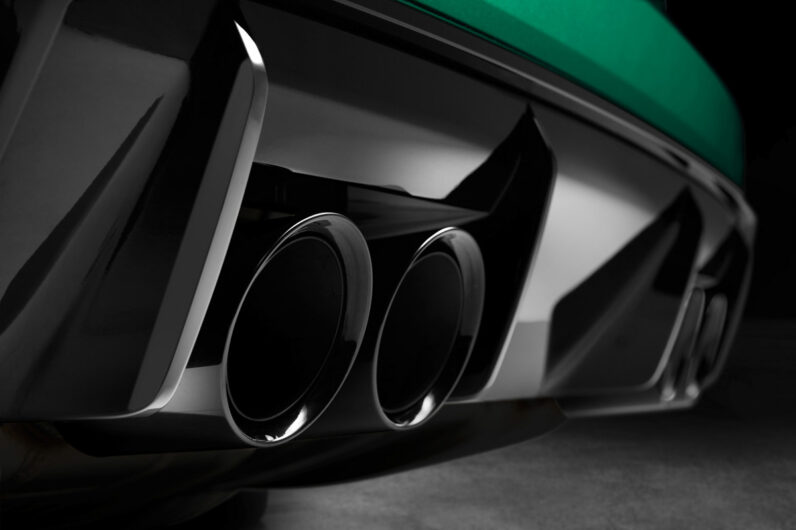
For the first time on an M3 saloon, BMW has also fitted a staggered 19- and 20-inch wheel and tyre package, with two braking systems available. The standard setup includes six-piston front calipers gripping 380mm iron discs, with a chunkier carbon ceramic setup with bigger 400mm discs available as part of the M Pro Package. That package also includes a lighter wheel design, carbonfibre interior trim pieces and a set of new carbonfibre bucket seats that save 10kg per seat.
As has become a trademark of all BMW M models, all of the separate dynamic elements such as the engine mapping, suspension, traction and stability controls, all-wheel drive system (where applied), rear differential and transmission are adjustable via the usual M driver mode function accessed in the digital interface or through two red toggles on the steering wheel. New for this generation of BMW M3 though is finer control of some of these elements, with a new 10-level adjustment on the traction and stability control systems and the adjustable brake booster that first debuted on the M8 Competition.
Local prices have yet to be confirmed, but expect the new M3 to be in line with rivals like the Mercedes-AMG C63 S saloon and Alfa Romeo Giulia Quadrifoglio, all of which spookily share a 503bhp power figure, four-doors and aggressive look. For more detailed information into the new performance and chassis tech debuting on the new M3, read our M4 Competition news page.
This article originally appeared at evo.co.uk
Copyright © evo UK, Dennis Publishing

